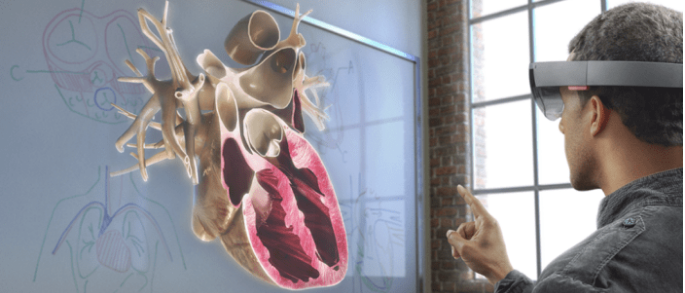The latest technologies such as Augmented Reality & Virtual Reality have bubbling under the surface of the pharmaceutical industry in the last few years. We are slowly beginning to see the focus of this emerging industry, and this is worth it.
Both of these technologies have shown exciting signs of potential, ranging from their ability to help doctors & patients with anxiety along the way to allow trained physicians to practice critical procedures. AR is precisely the beginning to make its mark.
Early adopters of health care reap the benefits of AR implementation through their products and safeguards. The role of augmented reality in the healthcare industry is expected to continue to increase, so we have outlined some of the ways in which AR can benefit from pharmaceutical companies.
Highlights of Contents
3 Benefits of Augmented Reality (AR) in Healthcare
1. Educating the consumer
Much emphasis is placed on visual stimulation in various industries, and health care is no different. The AR in pharmaceutical companies allows better patient education by seeing various complex products. It helps in engaging and educating the audience- no matter how old the patient is.
This may be a demonstration in the office of a doctor or the consumer scans the packaging at the store or at home. The augmented reality in medicine can help close the learning gap that can cause safety problems and clearly shows how to take a drug while enhancing the benefits of the product in a visible way.
An example of this is how Pfizer AR is used by Blippar. Consumers can learn how ThermaCare works and use the Tracing Tool to learn more about product options that were suitable to relieve their stiffness and pain.
2. Helping the physician
The strength of AR allows practitioners and trainees to access educational information without separating themselves from the critical task often at hand. This may simply help practitioners comprehend the best ways to manage a new treatment or show it in AR how a specific procedure must be performed.
A recent example allows medical students to interact in an intuitive way with a 3-dimensional representation of the body. The extent to which AR will be able to support & educate health care professionals will continue to push the frontier where technicians and the pharmaceutical industry collaborate more.
3. Sales Help
One of the greatest advantages of AR is the ability to demonstrate and visualize complex concepts clearly. The competitive landscape between drug manufacturers and service providers means that small benefits can lead to significant gains.
For competing sales representatives to the doctor’s attention, their ability to quickly demonstrate new drug benefits through AR can be very helpful. For example, imaging a three-dimensional device on the doctor’s office and showing the effect of the drug in question has a greater effect than the effect on the flat image.
Xiapex has harnessed the enhanced reality of its new treatments for people suffering from doctrine contraction. Healthcare professionals can scan the page to see the effects of the situation in 3D, see how the treatment works, and see potential cost savings and more.
Wrapping Up
The use of enhanced reality in the pharmaceutical industry has been designed to make life easier for both patients and healthcare professionals. As the AR industry continues to push the boundaries of technology and with the right innovative healthcare partners, we expect to see many of the most interesting AR cases that will transform the industry to the best.
To see the rising advantages of AR in healthcare industries, many augmented reality companies are providing their services. If you are related to the healthcare industries, you should definitely reap the benefits of AR in your industry.
Also Read: How will AI Revolutionize the Future of Game Development?
